Abstract
1. Previous work on the incorporation of inorganic phosphate (Pi) into ATP has suggested reversal of the chemical reactions of the Na pump in human red cells. A study has now been made of the associated movements of Na and K.
2. The efflux of K, and the influx and efflux of Na were measured. When the Ringer was without K, the loss of cell K was inhibited by ouabain, and the ouabain-sensitive component of K efflux (0·36 μ-equiv.ml.-1.hr-1) required external Na.
3. The exchange of Na was also inhibited by ouabain. When influx and efflux of Na were measured simultaneously in K-free Ringer there was an excess of ouabain-sensitive influx over efflux of about 0·36 μ-equiv.ml.-1.hr-1. This difference balanced the ouabain-sensitive K efflux, and was not found with 10 mM-external K. The Na and K movements appear to be coupled and to be mediated by reversal of the Na pump.
4. The net uptake of Na sensitive to ouabain was 0·38 μ-equiv.ml.-1.hr-1 for red cells incubated in K-free Ringer, and the net loss of K under the same conditions was 0·58 μ-equiv.ml.-1.hr-1 in rough keeping with the unidirectional flux values.
5. Oligomycin decreased Na influx and efflux to the same extent as ouabain.
6. There appears to be a coupled downhill movement of Na and K that is abolished both by inhibitors of the Na pump and by external K which promotes normal transport of Na outwards and K inwards.
Full text
PDF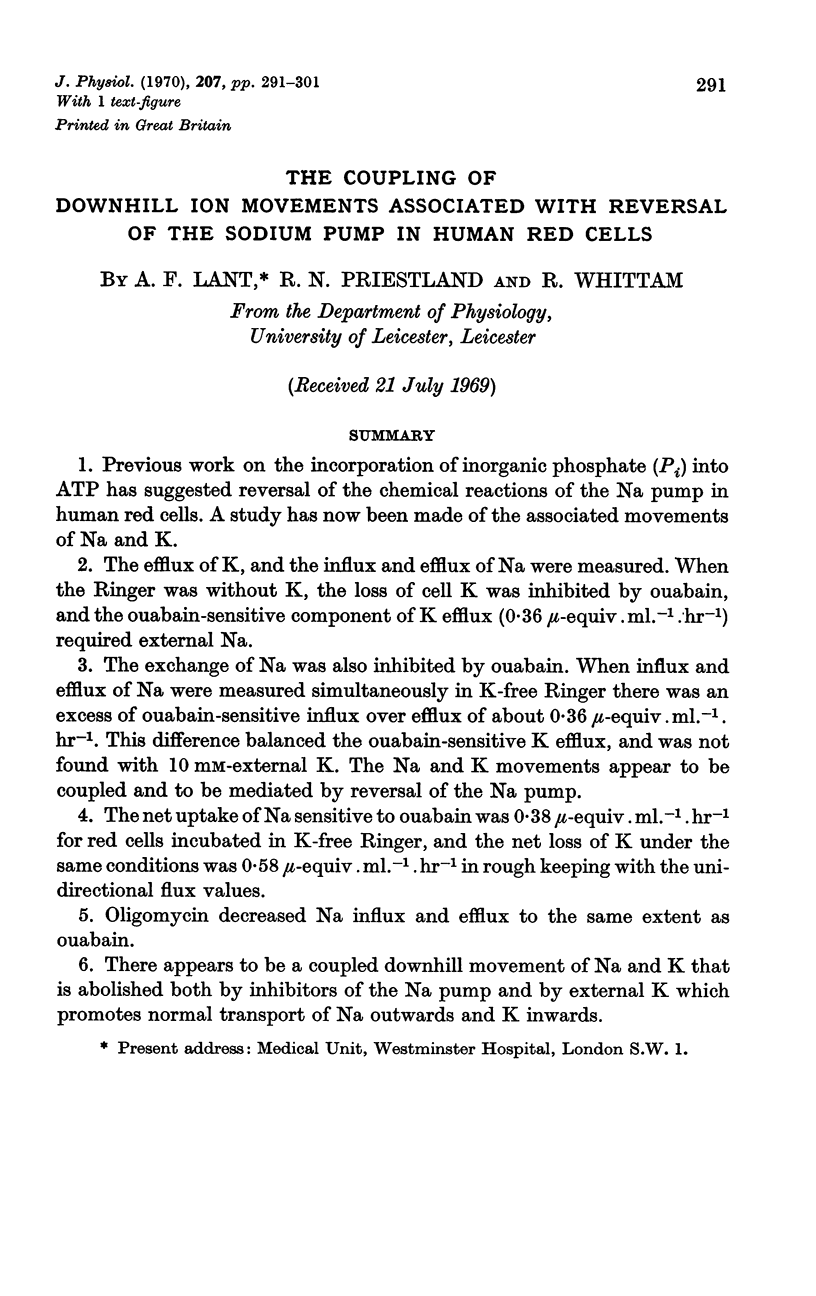
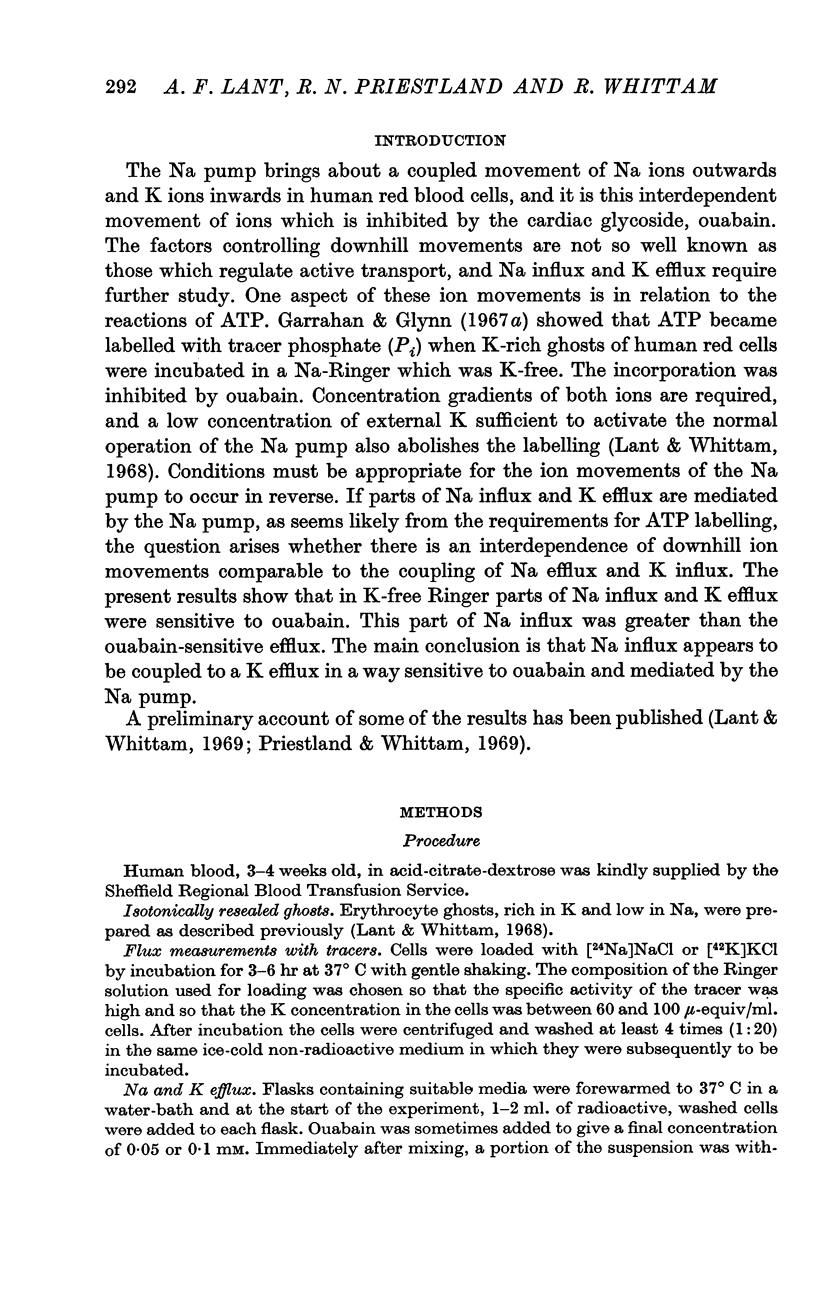
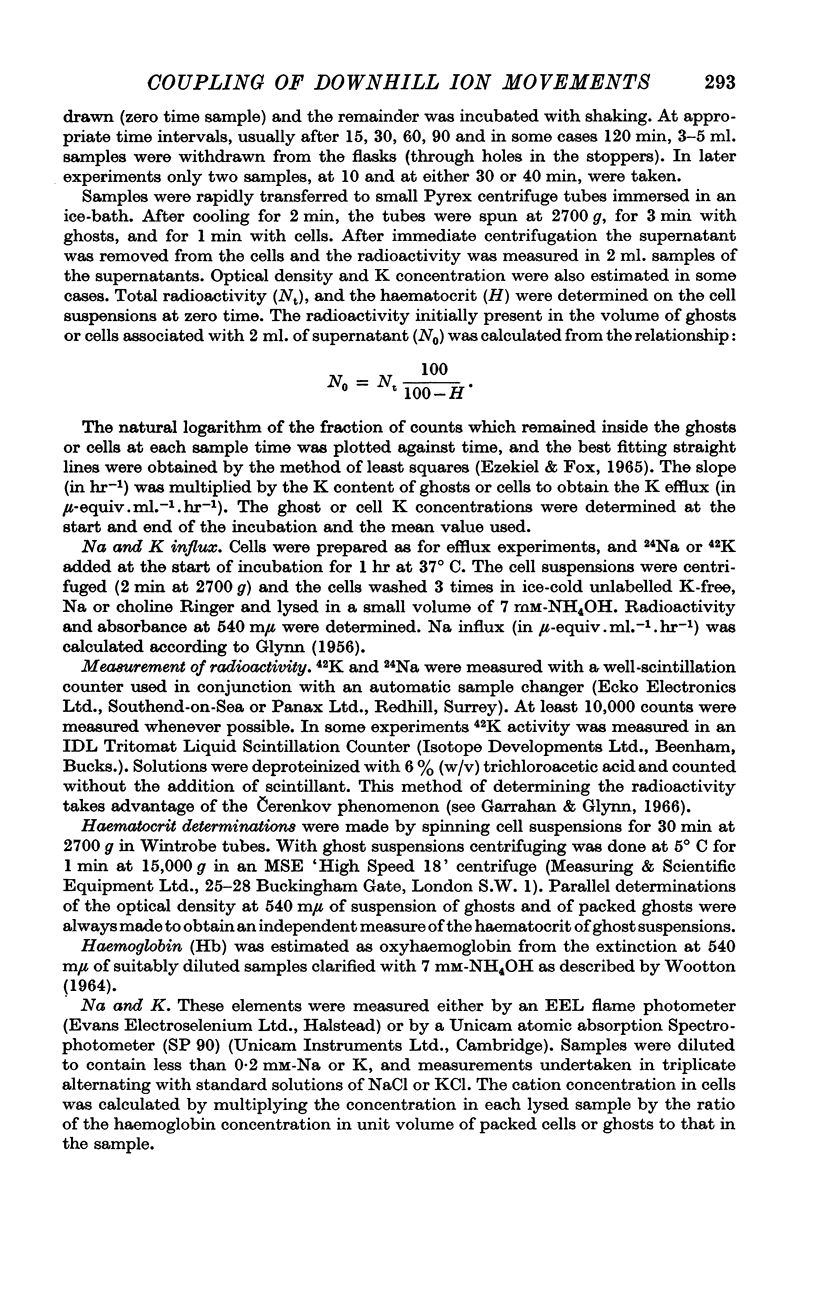
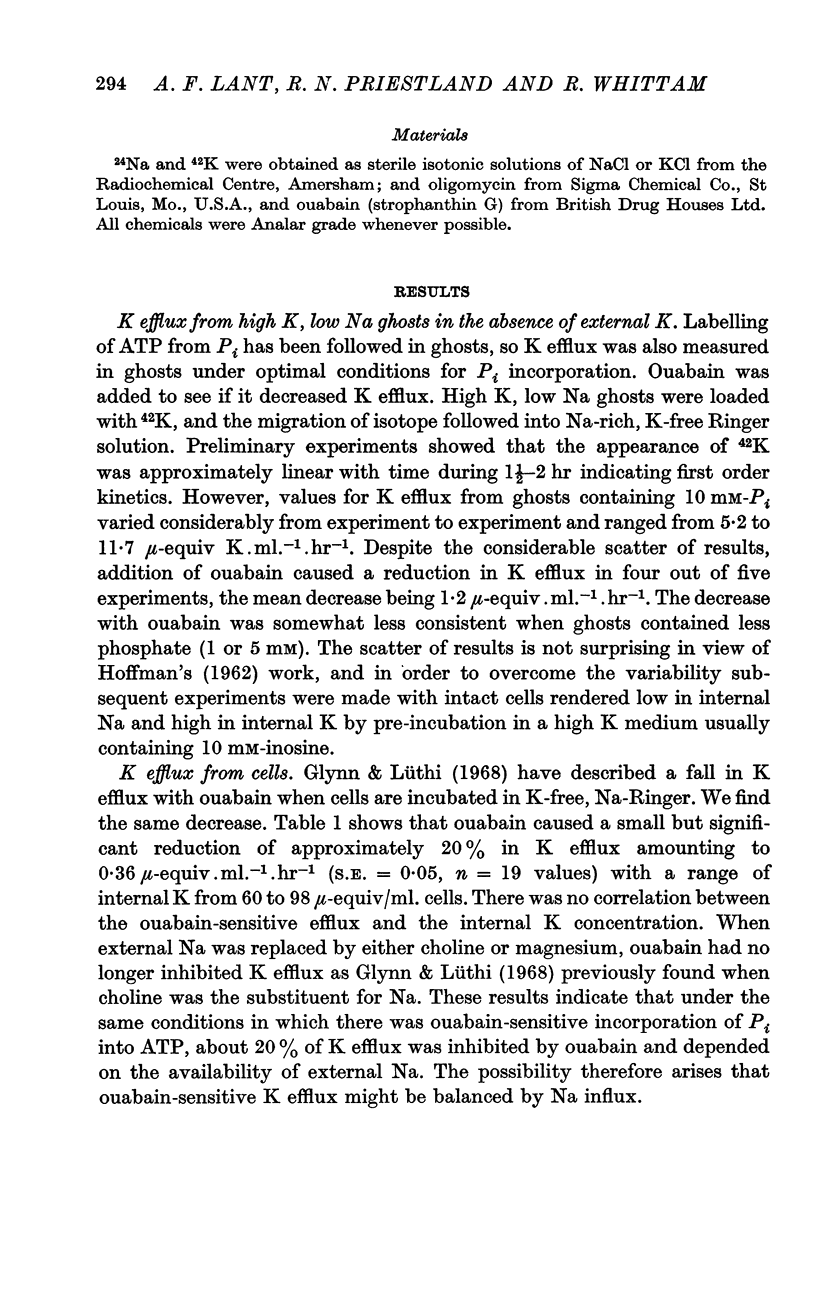
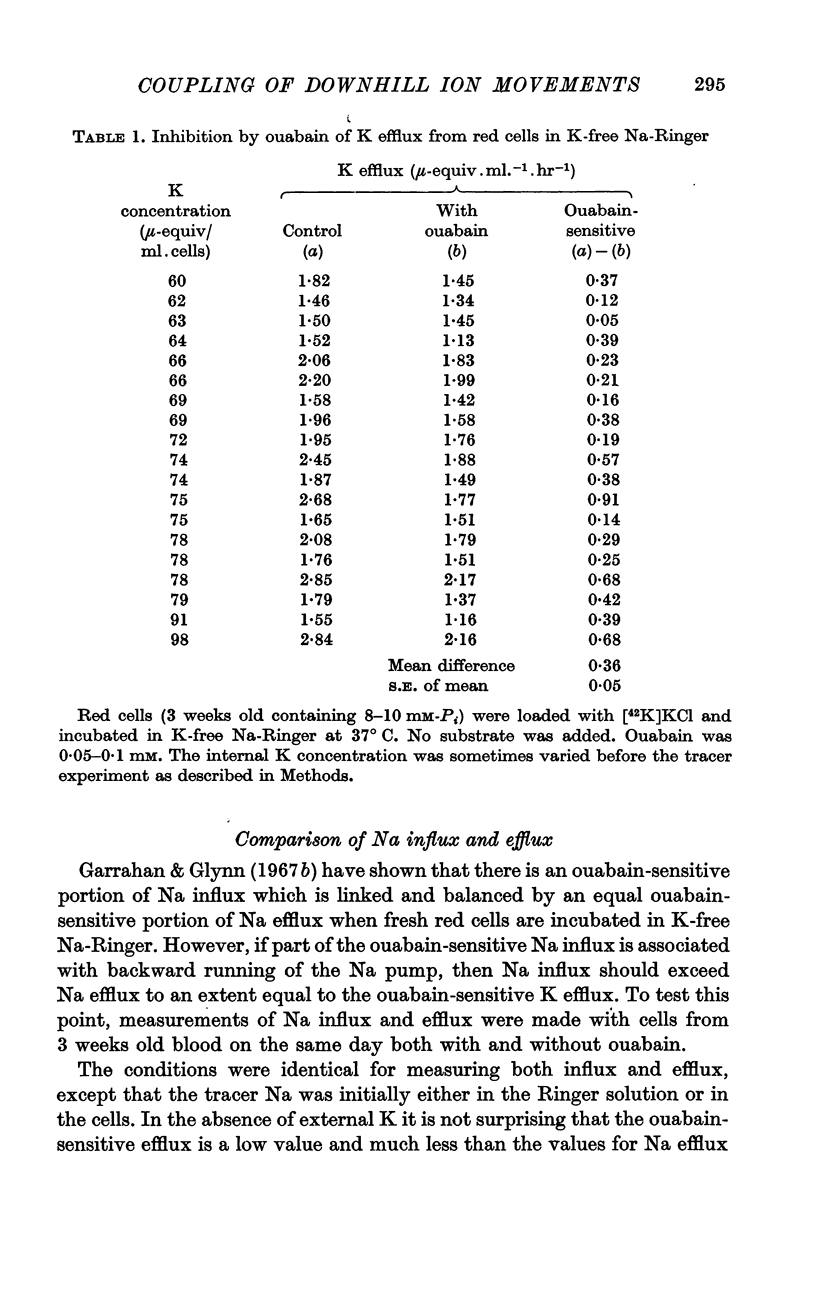
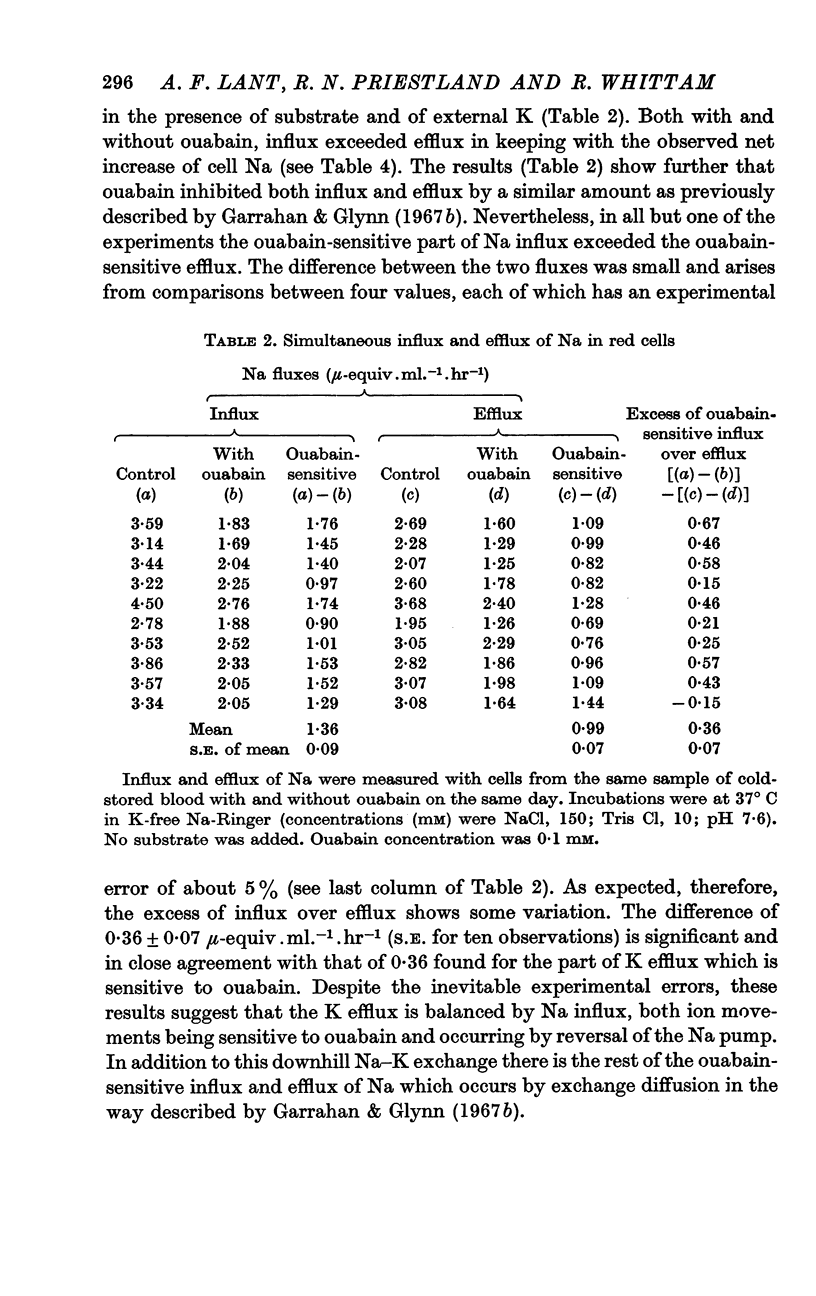
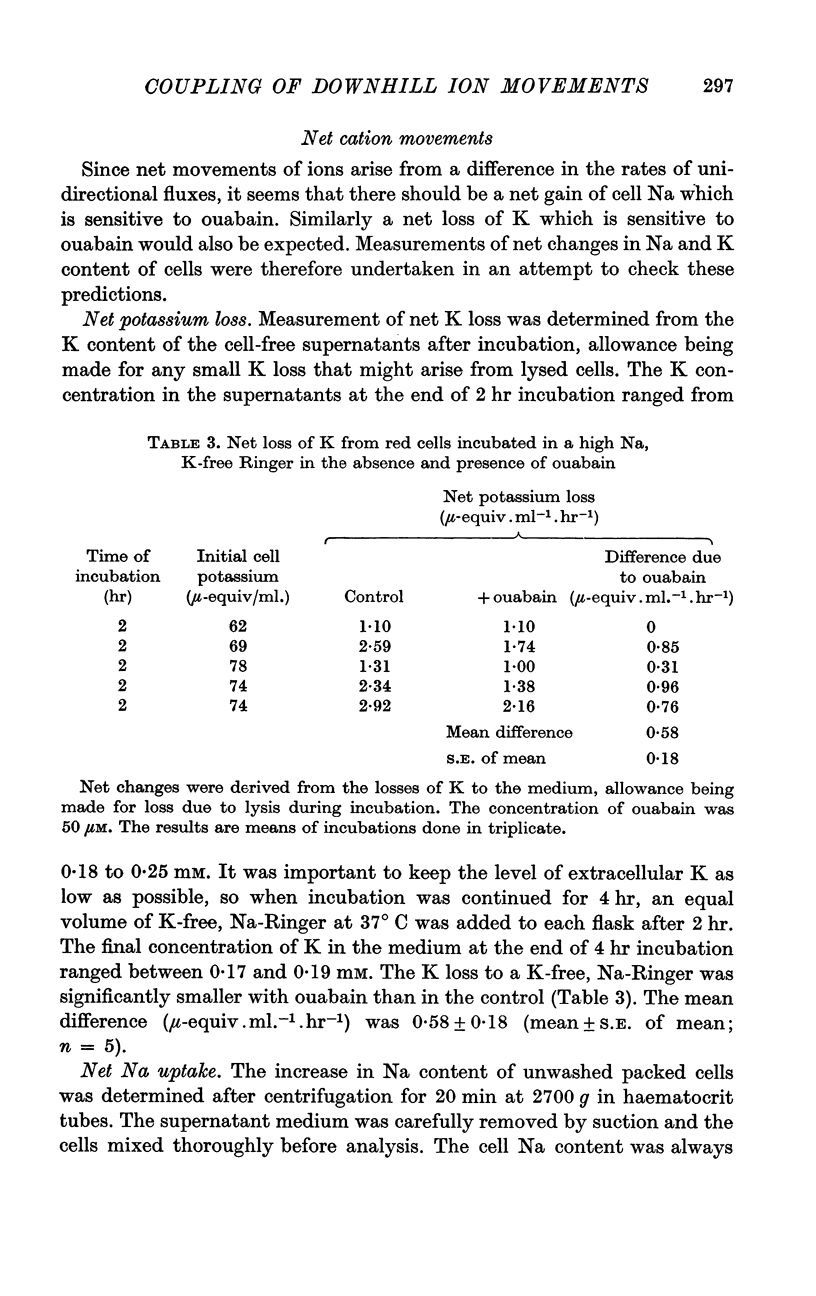
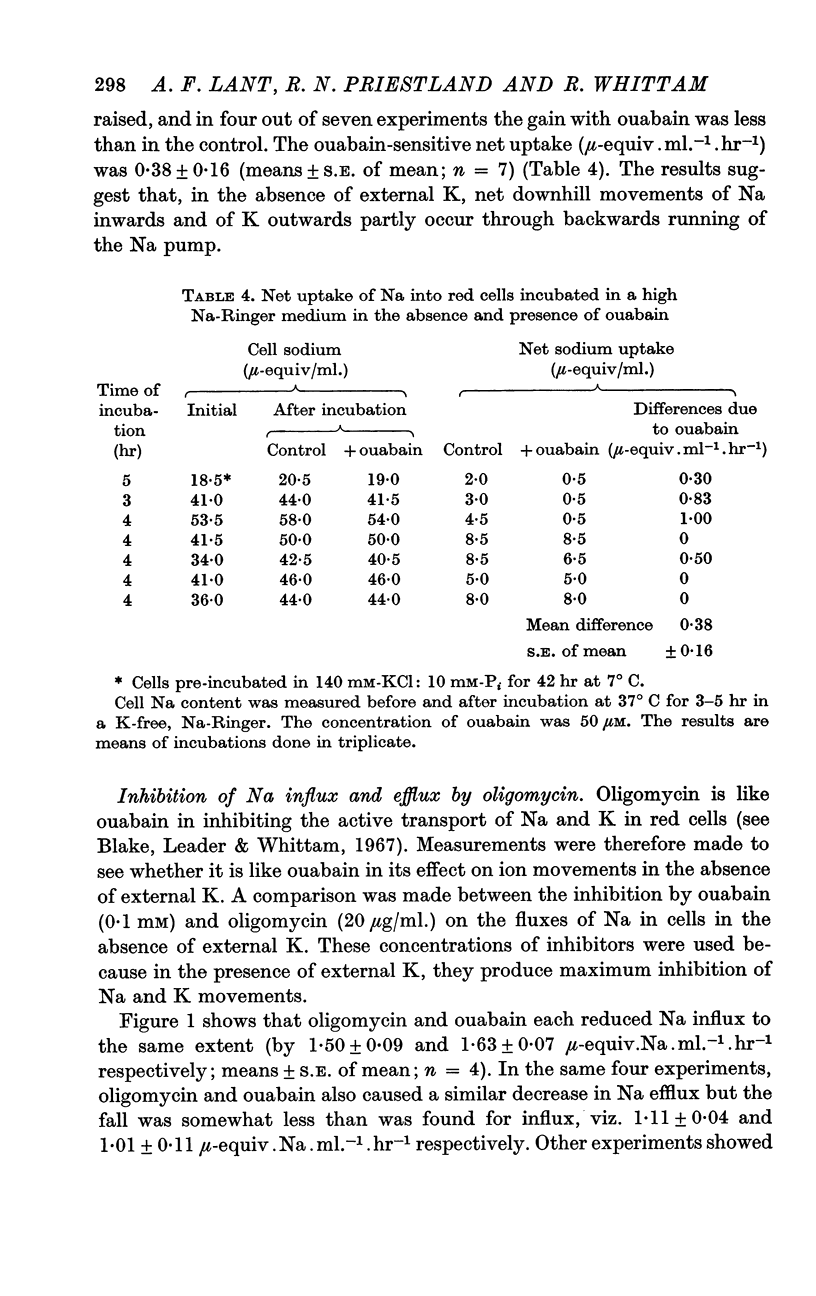
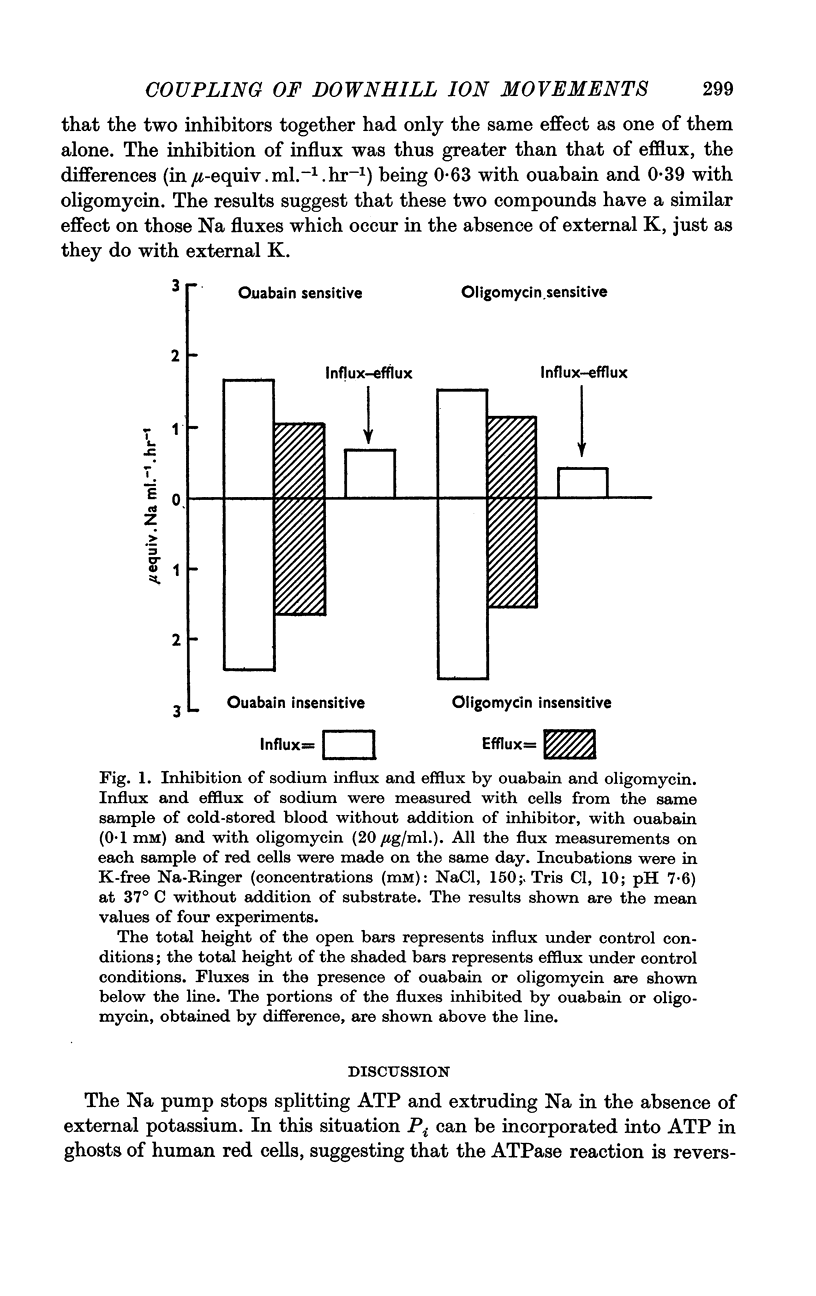
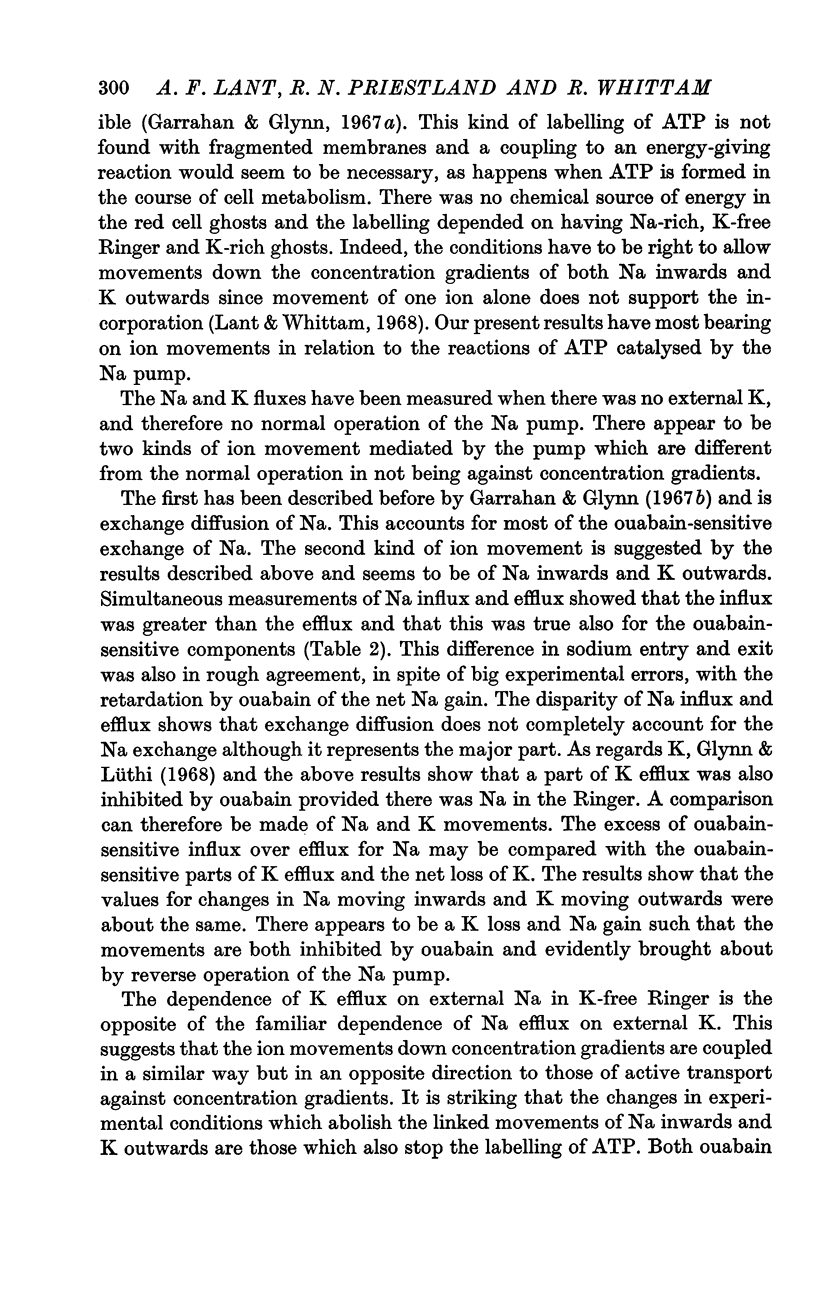
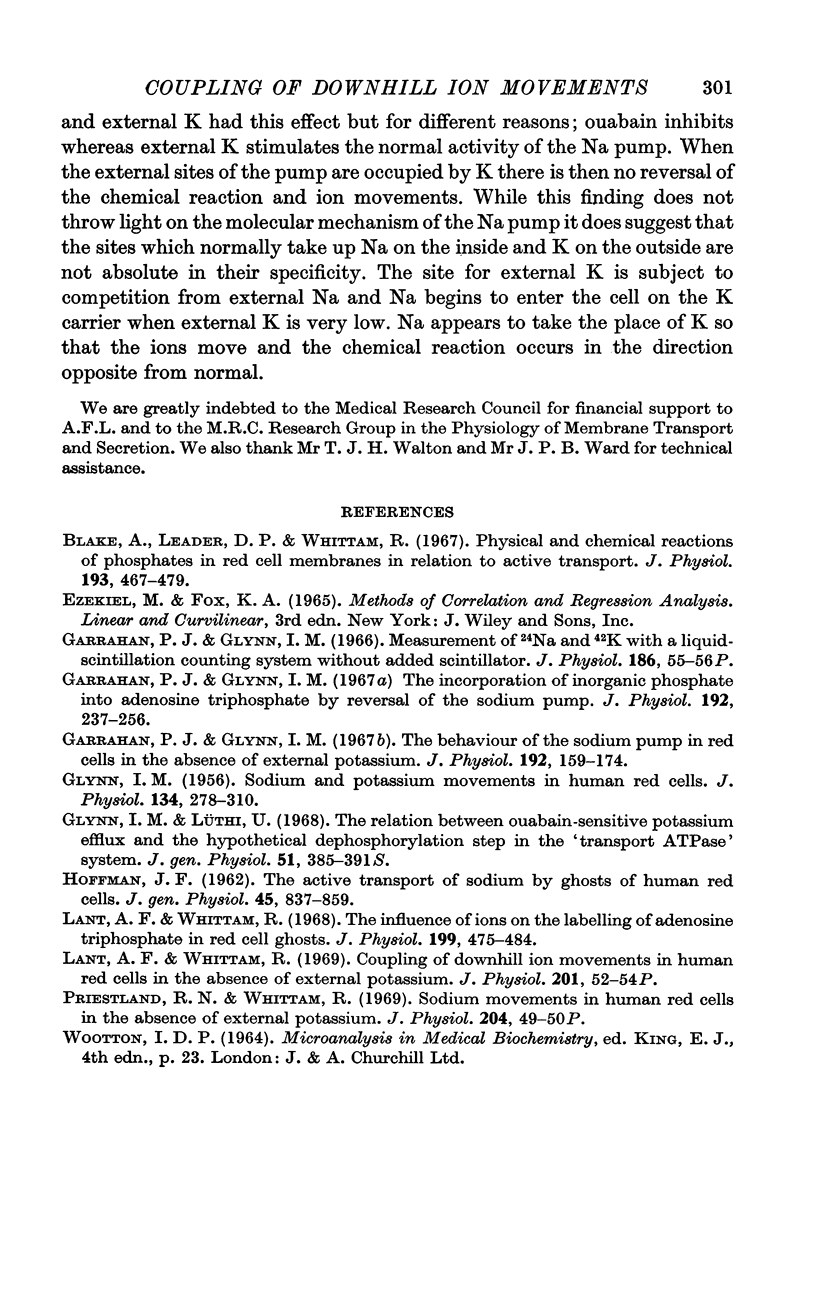
Selected References
These references are in PubMed. This may not be the complete list of references from this article.
- Blake A., Leader D. P., Whittam R. Physical and chemical reactions of phosphates in red cell membranes in relation to active transport. J Physiol. 1967 Nov;193(2):467–479. doi: 10.1113/jphysiol.1967.sp008372. [DOI] [PMC free article] [PubMed] [Google Scholar]
- GLYNN I. M. Sodium and potassium movements in human red cells. J Physiol. 1956 Nov 28;134(2):278–310. doi: 10.1113/jphysiol.1956.sp005643. [DOI] [PMC free article] [PubMed] [Google Scholar]
- Garrahan P. J., Glynn I. M. Measurement of 24Na and 42K with a liquid-scintillation counting system without added scintillator. J Physiol. 1966 Oct;186(2):55P–56P. [PubMed] [Google Scholar]
- Garrahan P. J., Glynn I. M. The behaviour of the sodium pump in red cells in the absence of external potassium. J Physiol. 1967 Sep;192(1):159–174. doi: 10.1113/jphysiol.1967.sp008294. [DOI] [PMC free article] [PubMed] [Google Scholar]
- Garrahan P. J., Glynn I. M. The incorporation of inorganic phosphate into adenosine triphosphate by reversal of the sodium pump. J Physiol. 1967 Sep;192(1):237–256. doi: 10.1113/jphysiol.1967.sp008298. [DOI] [PMC free article] [PubMed] [Google Scholar]
- HOFFMAN J. F. The active transport of sodium by ghosts of human red blood cells. J Gen Physiol. 1962 May;45:837–859. doi: 10.1085/jgp.45.5.837. [DOI] [PMC free article] [PubMed] [Google Scholar]
- Hays R. M. A new proposal for the action of vasopressin, based on studies of a complex synthetic membrane. J Gen Physiol. 1968 Mar;51(3):385–398. doi: 10.1085/jgp.51.3.385. [DOI] [PMC free article] [PubMed] [Google Scholar]
- Lant A. F., Whittam R. Coupling of downhill ion movements in human red cells in the absence of external potassium. J Physiol. 1969 Mar;201(1):52P–54P. [PubMed] [Google Scholar]
- Lant A. F., Whittam R. The influence of ions on the labelling of adenosine triphosphate in red cell ghosts. J Physiol. 1968 Dec;199(2):457–484. doi: 10.1113/jphysiol.1968.sp008663. [DOI] [PMC free article] [PubMed] [Google Scholar]
- Priestland R. N., Whittam R. Sodium movements in human red cells in the absence of external potassium. J Physiol. 1969 Sep;204(1):49P–50P. [PubMed] [Google Scholar]


